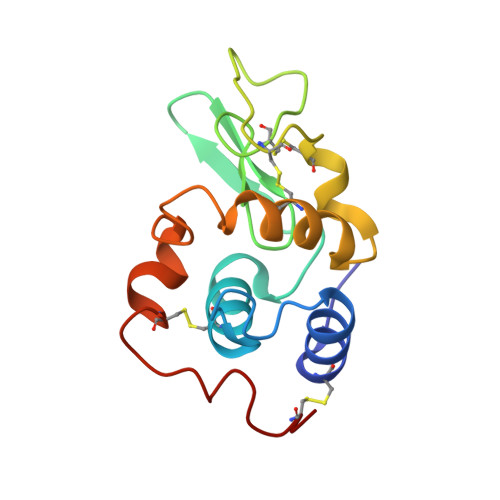Pressure-Dependent Changes in the Solution Structure of Hen Egg-White Lysozyme
Refaee, M., Tezuka, T., Akasaka, K., Williamson, M.(2003) J Mol Biol 327: 857
- PubMed: 12654268
- DOI: https://doi.org/10.1016/s0022-2836(03)00209-2
- Primary Citation of Related Structures:
1GXV, 1GXX - PubMed Abstract:
The "rules" governing protein structure and stability are still poorly understood. Important clues have come from proteins that operate under extreme conditions, because these clarify the physical constraints on proteins. One obvious extreme is pressure, but so far little is known of the behavior of proteins under pressure, largely for technical reasons. We have therefore developed new methodology for calculating structure change in solution with pressure, using NMR chemical shift changes, and we report the change in structure of lysozyme on going from 30 bar to 2000 bar, this being the first solution structure of a globular protein under pressure. The alpha-helical domain is compressed by approximately 1%, due to tighter packing between helices. The interdomain region is also compressed. By contrast, the beta-sheet domain displays very little overall compression, but undergoes more structural distortion than the alpha-domain. The largest volume changes tend to occur close to hydrated cavities. Because isothermal compressibility is related to volume fluctuation, this suggests that buried water molecules play an important role in conformational fluctuation at normal pressures, and are implicated as the nucleation sites for structural changes leading to pressure denaturation or channel opening.
Organizational Affiliation:
Department of Molecular Biology and Biotechnology, University of Sheffield, Firth Court, Western Bank, PO Box 594, Sheffiled S10 2UH, UK.














